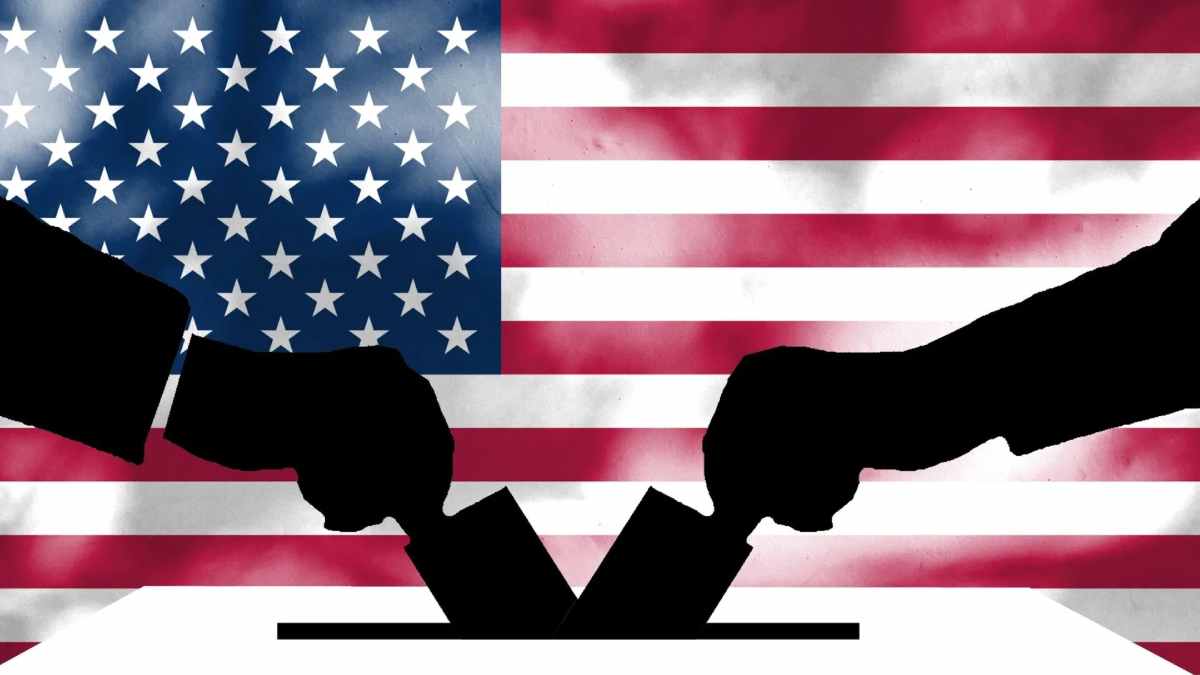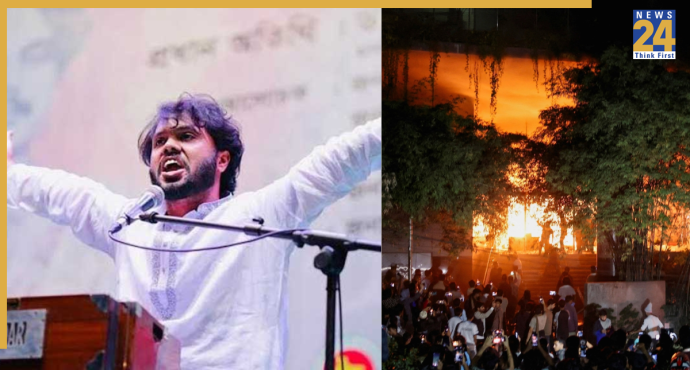Why are the Indian policymakers and the mandarins of the Ministry of External Affairs watching the US Presidential Election 2024 with eagle eyes and bated breaths? The answer may seem simple: the election results may affect Indo-US relations. Really?
It is not as easy to reply to this question as it appears. The US foreign policy is looked at generally as something that does not change suddenly with the change of the person sitting in the Oval Office in the White House. It is a bipartisan issue on most subjects.
Bipartisan Approach To India
Both Democrat and Republican candidates agree that India is useful and indispensable in many ways to safeguard the US interests in Asia and expand and bolster its geopolitical significance in the world.
Also Read: Kamala Harris or Donald Trump, Who Will Be Better US President For India?
As Washington wants to stop the Chinese expansionism in the South China Sea and the Indo-Pacific Region, it has plans in place to use New Delhi to checkmate Beijing.
India To Checkmate China?
With the Quadrilateral Dialogue or the Quad gaining ground and being labeled as the Asian NATO, India has no parallel in stopping the dragon in its own game of Chinese checkers.
At a time when Beijing has rejected the United Nations Convention on the Law of the Sea (UNCLOS), and rebuffed the Japanese advances in the sea, India is the only country which China will find it difficult to browbeat.
Significance Of India In Game Of Chinese Checkers
Though India has no territorial claim anywhere in the South China Sea and it has a less significant sea-lane passing through the area, New Delhi has begun asserting itself recently. Beijing has asked New Delhi several times to keep away from the controversy, but to no avail.
Political analysts believe India wants to exploit the South China Sea controversy and stand beside countries like Japan and the Philippines in an attempt to mount pressure on China so that it can extract concessions for its own geopolitical advantage.
India-China Border Dispute: Deciding Factor
For a country that has a disputed border of 4,057 kilometres and an unresolved LAC passing through the sensitive states of Jammu and Kashmir, Uttarakhand, Himachal Pradesh, Sikkim, and Arunachal Pradesh, it is quite obvious to exploit the situation. So it is not surprising that New Delhi has shown increased interest in the South China Sea in the name of the free navigation rights.
Also Read: Why Has US Imposed Sanctions On Indian Firms Now, After Overlooking Russian Oil Imports?
The Indo-Pacific region is another area, where New Delhi can help the US in checkmating China. The US has made its footprint from Guam to Diego Garcia and Africa or the Cape of Good Hope to far-flung tiny islands of the ocean, China is increasing its presence and expanding its significance through its Belt and Road Initiative.
How Will India Help US In Indo-Pacific?
It will take some time for Beijing to catch up with the US, but the dragon has woken up and it is making serious strides in the region. India can join hands with Australia and New Zealand and help the US without joining the AUKUS or the Australia-UK-US bloc.
Kamala Harris or Donald Trump whoever wins, the new US President will have to deepen the relationship with India.
Will India Benefit From China-US Trade War
Political analysts believe Donald Trump may adopt a more hawkish approach to Beijing in geopolitical as well as economic issues. A votary of ‘America First’ and ‘Make America Great Again’ slogans, the Republican president is most likely to convert these slogans into reality.
A US-China trade war with new tariffs being imposed on Chinese imports is most likely to begin soon, perhaps weeks after Donald Trump takes the oath of office on January 20, 2025. He is also most likely to adopt a similar, though not as harsh, approach to India as he has made it clear many times during his election campaign.
Though Indian exports to the US may come down with the increased tariffs and a hostile trade environment, it may help Indian trade in a new and different way. New Delhi can use the anti-China trade ecosystem in the US to increase its own trade with the country with certain adjustments. Though it may not replace the dragon, India can certainly reduce the gap it may suffer due to increased tariffs in that country.
Indian foreign office mandarins are also watching the US Presidential Election carefully because if elected, Donald Trump is most likely to put hindrances to the H1B visa, which is used by Indian citizens, particularly those in the IT sector. If the Republican leader becomes US President, Indians may be at the receiving end with less number of visas. It may hit the remittances as well as the earnings of the IT and the ITES sector employees.
Will Remittances From the US Come Down?
Persons of the Indian diaspora living in the US sent $125 billion to the country of their origin in 2023-24. The remittances India received have increased from %87 billion in 2020-21 to $89 billion in 21-22 and $110 billion in 2022-23. It may come down if Donald Trump gets elected and implements his policy of containing the influx of immigrants, the Indian policymakers apprehend.
Indian mandarins are waiting with their fingers crossed, but baited breaths. Let the US voters decide.













